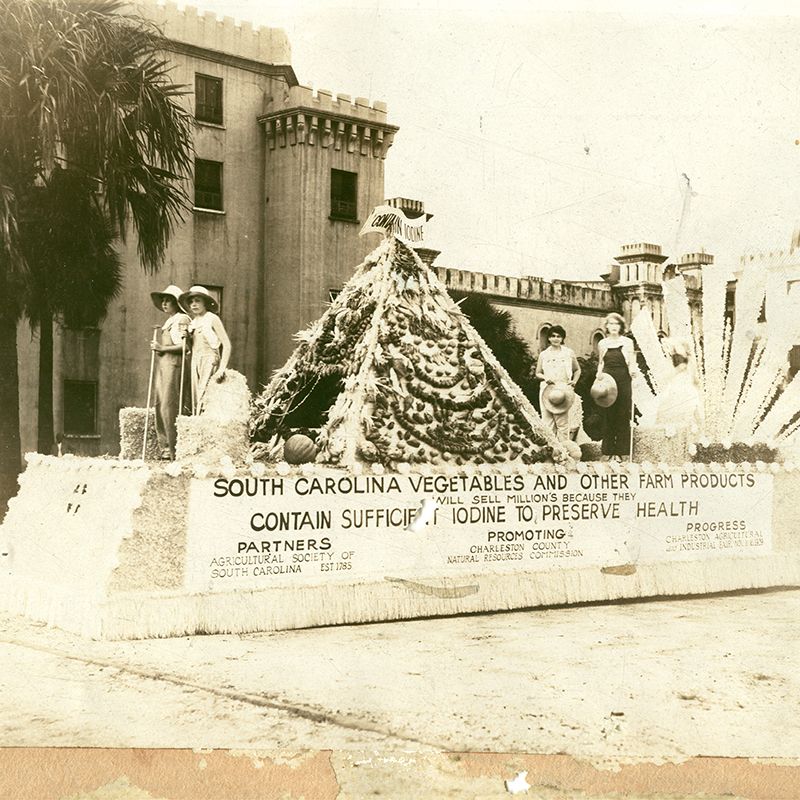
This vegetable-clad float, and the four women dressed as field hands riding it, took part in the parade celebrating the opening of Grace Memorial Bridge (known as the “Old Cooper River Bridge”). The float traveled with the parade 100-plus miles from Charleston to Conway to promote the Charleston Agricultural and Industrial Fair, which began in 1924 at The Citadel’s Johnson Hagood Stadium, and featured not only competitions and displays of agriculture, livestock, and poultry but also amusement rides, nightly fireworks, and railroad circus cars. Some notable attractions over the years included 1934’s “Wall of Death,” in which Olive Hager drove a motorcycle around the inside of a cylindrical track at breakneck speeds, and 1937’s “buried alive” girl Betty Burke, who stayed six feet underground for five days and was available to talk via telephone, as well as “Great Wilma, Human Projectile” who was shot out of a cannon 80 feet over two moving Ferris wheels. The fair operated through the Great Depression and World War II, and the Exchange Club assumed ownership in 1957. Over the years, the carnival moved locations from Johnson Hagood, to a plot of land on Spruill and Meeting streets, to Dorchester Road, and finally to Ladson, where it is still in operation today as the Coastal Carolina Fair.
PHOTOGRAPH COURTESY OF THE SOUTH CAROLINA HISTORICAL SOCIETY